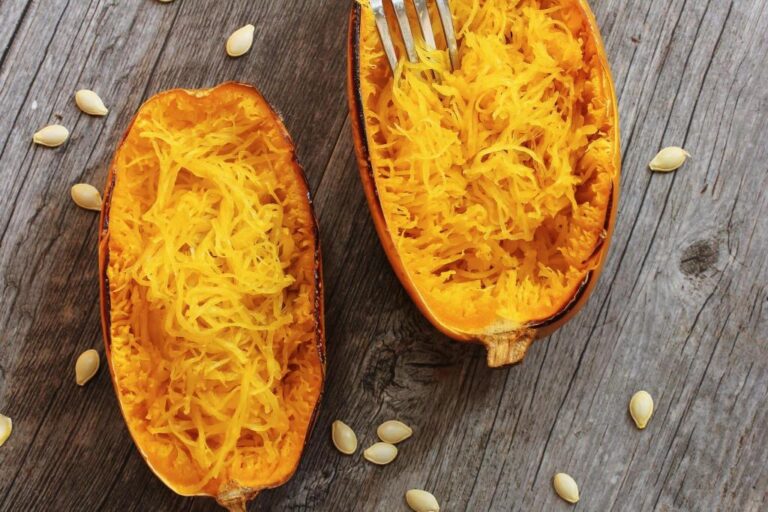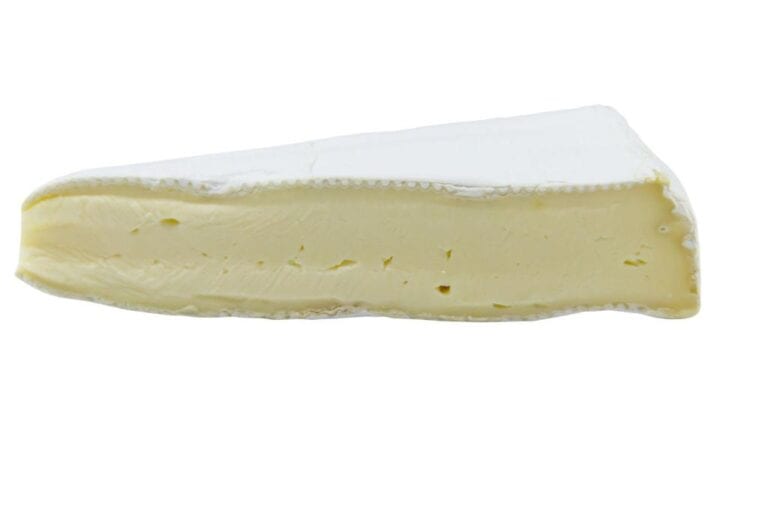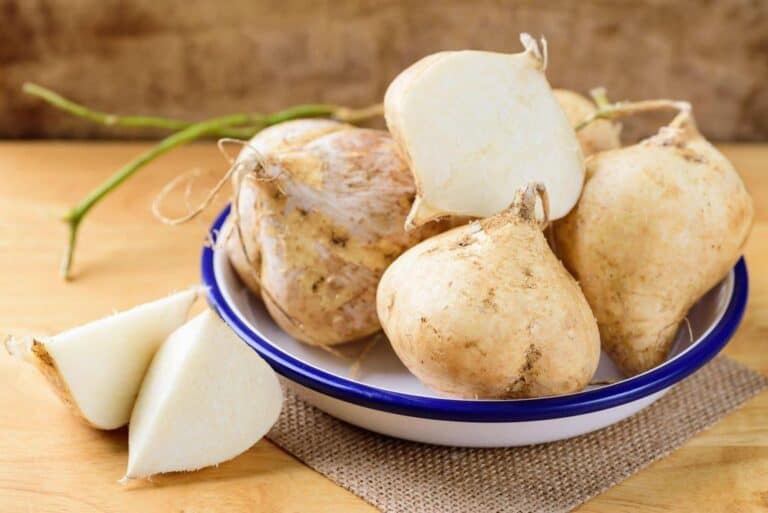My Acorn Squash Turned Orange: Is It Still Good or Go Bad?
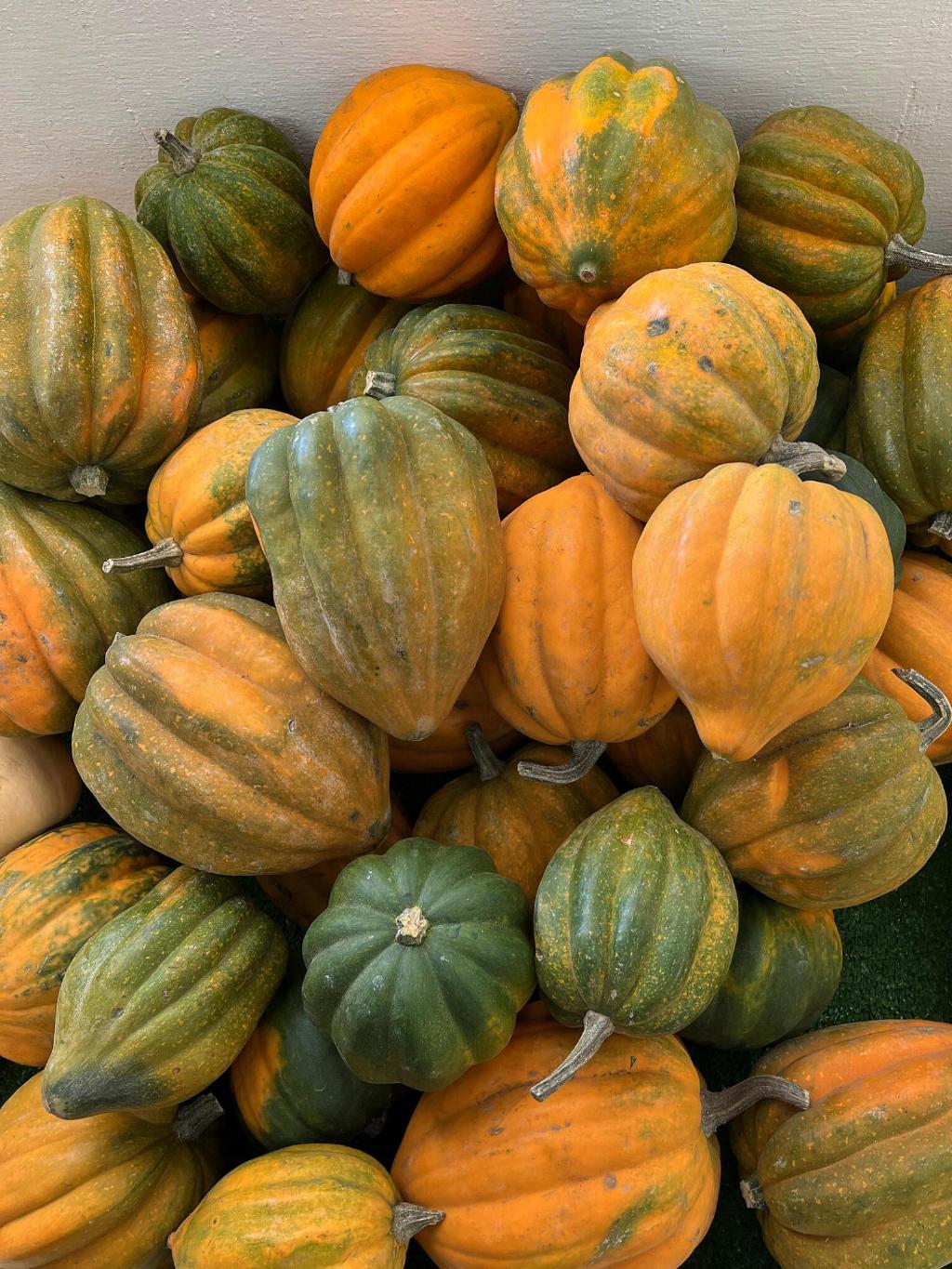
Are you a fan of the autumnal flavors that squash brings to the table? If so, chances are that you might have come across an acorn squash in your culinary adventures.
This vegetable is used in a lot of different ways and tastes great. Its unique shape makes it classic for fall dishes. What should you do, though, if your bright green acorn squash seems to turn orange all of a sudden? Do you find yourself wondering if it’s still safe to eat or has gone bad?
Most likely, an acorn squash that has turned orange is already too ripe. It is still safe to eat, though, as long as it does not look like it is going bad.
Come with us on a trip through nature’s paintings to learn how color can tell you a lot about how fresh food is. We will explain everything you need to know about acorn squash. Why some varieties turn bright orange when they are ready to be picked and why others have lovely, rich green skin.
Find out everything you need to know about that mysterious change from green to orange. Whether you are an experienced home cook with a garden full of fresh produce or someone who stumbled upon an eye-catching farmer’s market display full of colorful squashes,.
Various Color Variations in Acorn Squash
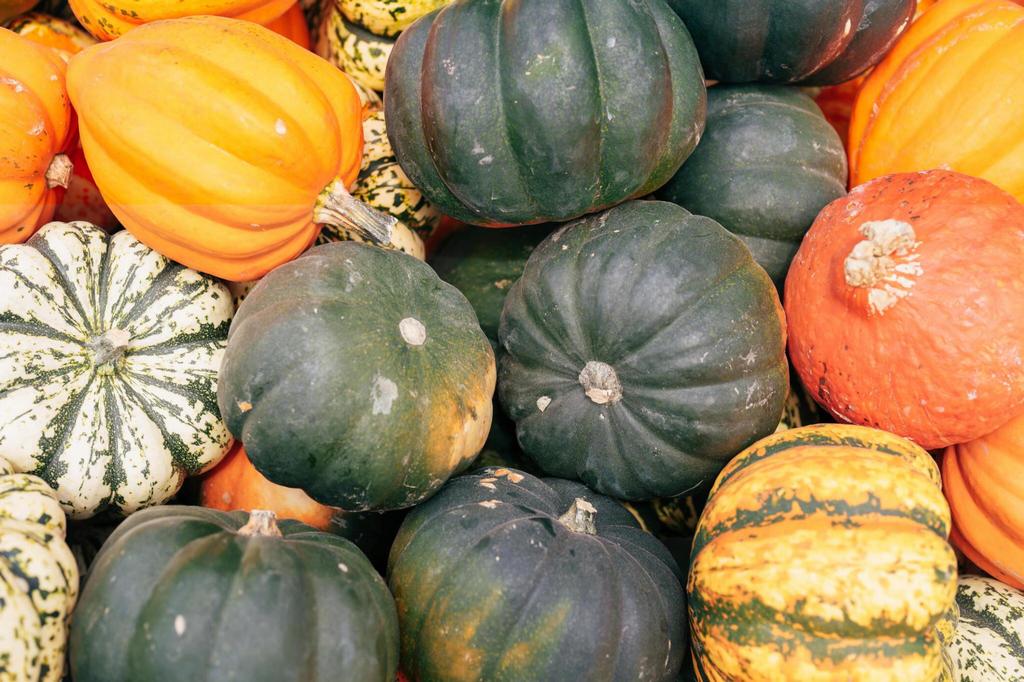
Acorn squash offers a delightful range of colors that can add vibrancy to your kitchen or dining table. While the classic image of an acorn squash might have a deep green hue, it’s not uncommon for this vegetable to display other color variations.
One notable change is when the acorn squash turns from its original green shade to a vibrant orange hue. So if you find yourself with an orange acorn squash on hand, don’t fret just yet – it could still be perfectly good!
Different Varieties May Exhibit Unique Color Characteristics
It’s important to note that not all acorn squashes are the same when it comes to their natural coloring. Different varieties have their own distinct characteristics and can display varied hues.
For example, some popular varieties like ‘Table Queen‘ actually start off with an orange skin right from the beginning! So if you come across an acorn squash at the store or in your garden that starts out orange, there’s no need for concern because that color is entirely normal.
On the other hand, certain cultivars may mature into an intense golden-orange as they ripen fully. This transformation is completely natural and doesn’t necessarily indicate spoilage or overripeness.
Keep in mind that changes in environmental conditions during growth can also influence the color development of these squashes. Therefore, even within one variety itself, you may notice slight variations in hues ranging from pale yellowish-green to deep, rich oranges.
Understanding these different possibilities will give you confidence whether shopping for or harvesting your own acorn squashes, knowing that while their colors may vary greatly, they’ll likely remain delicious additions to any dish you choose.
Why Does Acorn Squash Turn Orange?
Acorn squash turning orange is a natural and expected process in its ripening journey. When acorn squash is harvested or purchased, it typically has a vibrant green skin. However, as the squash matures and ripens, it undergoes chemical changes that cause the color to transition to a rich orange.
This transformation occurs due to the presence of carotenoids, which are pigments responsible for giving fruits and vegetables their vibrant colors. Acorn squashes contain high levels of beta-carotene, one specific type of carotenoid that contributes to the striking orange hue.
As the squash ripens, enzymes break down chlorophyll (the pigment responsible for green coloration) and convert it into beta-carotene, causing the shift in color from green to orange.
These natural chemical reactions are not indicative of spoilage or any issues with freshness but rather signify that your acorn squash is fully matured and ready for consumption.
So rest assured that this change in appearance is actually an exciting sign that your acorn squash has reached optimal readiness!
| Related: Is Acorn Squash a Starchy Vegetable? |
Is an Orange-Colored Acorn Squash Still Good?
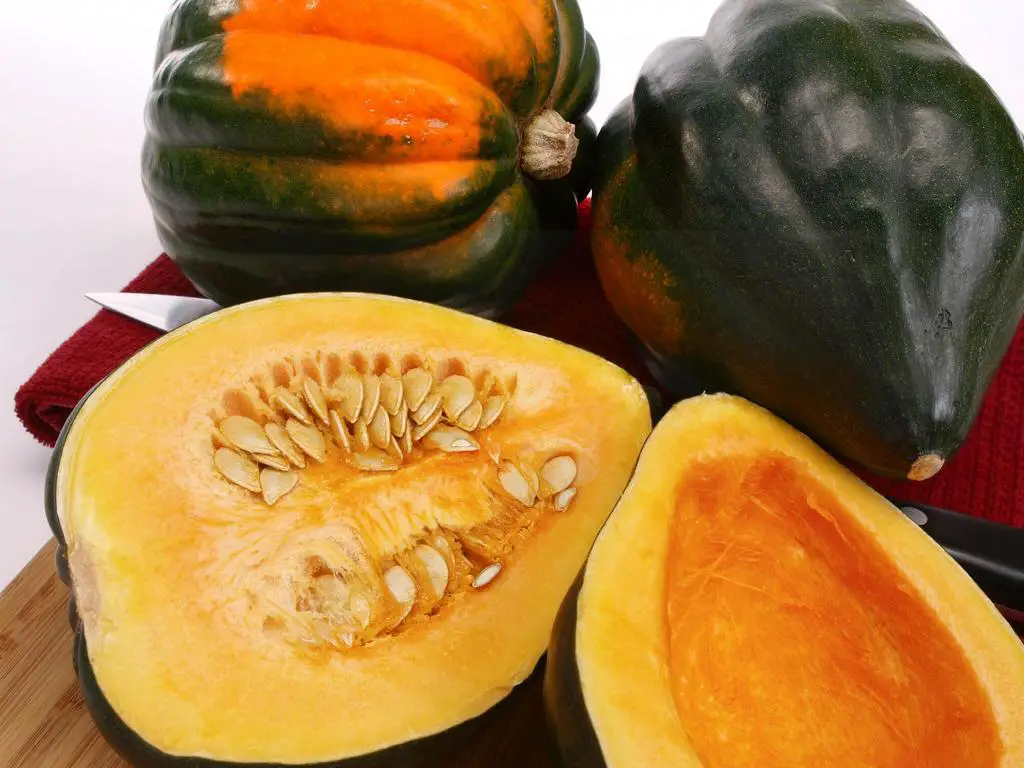
You might be surprised to find that an acorn squash turning orange doesn’t necessarily mean it’s gone bad. While we’re used to seeing this winter squash in its vibrant green color, the transition to a lovely shade of orange can actually be part of the ripening process.
Acorn squash range in color from deep forest greens to golden oranges, indicating their readiness for harvest and consumption.
An acorn squash that has turned orange is likely overripe and may be dry, stringy, and bland when cooked. However, it is still technically good to eat as long as it doesn’t show any signs of rotting.
When assessing the freshness and edibility of your acorn squash, it’s important to consider visual signs of spoilage. Examine the surface for any mold growth or soft spots, as these are indications that it may have deteriorated. Mold can thrive on both green and orange squashes, so don’t rely solely on color changes as a reliable indicator of quality.
Visual cues can give you some insights into the condition of your acorn squash. There are other factors you should also rely on when making your judgment call.
Give a sniff – if you detect any foul odors coming from the flesh or seeds inside (think rotten or musty smells), it’s best not to chance it. Feel the outer skin for texture; if it feels excessively mushy or soft compared to when you purchased or harvested it initially, then chances are that there has been some degradation underway.
Remember: trust your senses! Using more than one sense, like smell, sight, and touch, together will give you a more accurate picture than just using one, like discoloration.
Determining Freshness of Acorn Squash: Touch and Texture
When trying to figure out how fresh an acorn squash is, its color might not tell you everything you need to know. While a green acorn squash is typically associated with its peak ripeness, there are instances where the squash can turn orange without indicating spoilage. In these cases, you can use touch and texture as additional indicators to determine if your acorn squash is still good or has gone bad.
First, gently press your fingertips against the skin of the acorn squash. A fresh and ripe one should feel firm but slightly yield under light pressure. If it feels mushy or soft in certain areas, this could be a sign that it has started to decay. Additionally, check for any visible signs of mold or rot on the exterior.
Next, pay attention to the texture when cutting open the acorn squash. A healthy one should have flesh that is smooth and dense, with a vibrant orange color throughout. However, if you notice sections that are slimy or discolored (black or brown), it’s best to discard them, as these are clear indications of spoilage.
By combining color observation with tactile indicators such as firmness and texture, you’ll be better equipped to assess whether your orange acorn squash is still fresh and ready for delicious use in recipes or if it has unfortunately crossed over into rotten territory.
Signs of a Ripe Acorn Squash
When it comes to assessing the ripeness of your acorn squash, there are a few key indicators you can look out for.
- Firmness: Gently press the exterior. A ripe acorn squash should feel firm but give slightly under pressure.
- Color Uniformity: While the overall color may change to orange, ensure it’s uniform. Irregular discoloration could indicate spoilage.
- Dullness of Skin: A ripe squash often has a duller skin compared to its shinier, unripe counterpart.
If you want to delve deeper into determining ripeness without cutting into your precious squash prematurely, consider gently squeezing the flesh from beneath, applying slight pressure around various sections while avoiding breaking through the skin entirely.
If it feels relatively firm yet yields slightly under gentle pressure without feeling mushy or overly soft inside, chances are it is overripe but still edible.
Common Misconceptions About Acorn Squash Ripeness
Acorn squash, with its vibrant green exterior, often sparks confusion when it undergoes a natural color evolution. Let’s debunk some common misconceptions:
- Myth: Green Means Unripe
- Reality: Acorn squash starts green and ripens into an orange hue. Green isn’t a sign of underripeness; it’s just the beginning of the ripening journey.
- Myth: Orange Equals Spoilage
- Reality: The shift to orange indicates ripeness, not spoilage. Don’t be alarmed; embrace the color change as a culinary indicator.
| Read: Acorn Squash vs Spaghetti Squash: A Nutritional Showdown |
The Journey from Good to Bad: Signs of Spoilage
Despite the natural color progression, acorn squash is not invincible. There are signs you should watch out for to determine if it’s still good for consumption:
- Soft Spots: If you notice soft or mushy spots on the squash, it might be a sign of decay.
- Unpleasant Odor: A foul smell emanating from the squash is a definite red flag. A fresh acorn squash should have a mild, earthy scent.
- Mold Formation: Mold is a clear indicator that your acorn squash has overstayed its welcome. Discard any squash showing signs of mold.
Preserving Acorn Squash Shelf Life:
Now that you know acorn squash can turn orange without necessarily going bad, let’s discuss how to preserve its shelf life. One of the key factors in maintaining the freshness and color of acorn squash is proper storage.
Ideally, you should keep your acorn squash in a cool and dry place with good air circulation. The temperature range of 50–60°F (10–15°C) is optimal for preventing premature ripening or spoilage.
Another way to prolong the shelf life of your acorn squash is storing it away from other fruits and vegetables. This is because some produce releases ethylene gas as it ripen, which can accelerate the decay process in nearby items.
By keeping your acorn squash separate from other ethylene-producing fruits like apples or bananas, you can slow down its ripening process.
Environmental factors also play a crucial role in determining an acorn squash’s quality and speed of ripening. Exposure to direct sunlight or high temperatures can cause faster color changes and accelerated decomposition. On the other hand, cooler environments with less light exposure will help maintain the greenness and integrity of an unripe acorn squash for longer periods of time.
By following these recommendations on storing your acorn squashes properly and considering environmental conditions, you’ll be able to maximize their freshness and extend their shelf life significantly.
Remember not to refrigerate uncut whole squashes unless necessary, as lower temperatures may compromise their flavor and texture over time!


